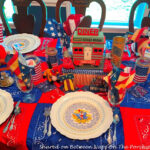Are you looking to upgrade your DJ setup and considering the Pioneer Cdj 1000? Perhaps you’re transitioning from a controller like Traktor S2 and aiming for a more industry-standard feel with CDJs. A common question arises for DJs in this situation: can you use the classic Pioneer CDJ 1000 MK3 with Serato DJ software? Let’s break down the compatibility and how you can make these iconic decks work with your digital DJing setup.
The user in the original forum post, like many aspiring DJs, is exploring the possibility of using CDJ 1000 MK3s with Serato DJ. They’re familiar with digital DJing through Traktor Pro and the S2 controller but are drawn to the tactile experience of CDJs and their prevalence in club environments. The core of the question is about bridging the gap between older CDJ technology and modern DJ software.
The good news is, yes, you absolutely can use Pioneer CDJ 1000 MK3s with Serato DJ Pro. However, it’s crucial to understand that these CDJs are not plug-and-play with Serato in the same way as some newer, Serato-certified controllers or media players. The CDJ 1000 MK3, being a model from the early 2000s, doesn’t support HID (Human Interface Device) mode for direct software control like more recent CDJs such as the CDJ-900NXS or CDJ-2000NXS.
So, how do you connect and use them with Serato DJ? The key is timecode CDs. Timecode CDs are special discs that, when played on your CDJ 1000 MK3, send control signals to your Serato DJ software through a compatible audio interface, often referred to as a “sound card” or “Serato box.”
Here’s what you’ll need to get your CDJ 1000 MK3s working with Serato DJ:
- Pioneer CDJ 1000 MK3 Decks: Obviously, the heart of your setup.
- Serato DJ Pro Software: Make sure you have a license for Serato DJ Pro.
- Serato-Compatible Audio Interface: This is essential. You’ll need a sound card that Serato recognizes for timecode control. Popular options include:
- Rane SL2, SL3, or SL4
- Denon DJ DS1
- Mixers with built-in Serato sound cards (like some Pioneer DJM mixers or Rane mixers).
- Timecode CDs: You’ll need Serato timecode CDs to load into your CDJ 1000 MK3s. These discs contain the control signal that Serato reads.
- RCA Cables: To connect your CDJ 1000 MK3s to your audio interface and your audio interface to your mixer/speakers.
Setting up is relatively straightforward:
- Connect each CDJ 1000 MK3 to your Serato-compatible audio interface using RCA cables.
- Connect the audio interface to your computer via USB.
- Launch Serato DJ Pro.
- Place the Serato timecode CDs into the CDJ 1000 MK3s, just like you would with regular audio CDs.
- In Serato DJ Pro, configure your audio inputs to correspond to the channels your CDJs are connected to on your audio interface.
- Serato should now recognize the timecode signal, and you’ll be able to control your digital tracks in Serato using the CDJ 1000 MK3 platters and controls.
Is the CDJ 1000 MK3 still a good option in today’s DJ world?
The original forum commenter mentions liking the CDJ 1000 MK3 even more than some newer Nexus models, praising the platter responsiveness. For a bedroom DJ setup, especially if you can get a good deal on CDJ 1000 MK3s, they can be a fantastic entry into the world of CDJs. They offer a robust build quality and a classic CDJ feel that many DJs appreciate.
Pros of using CDJ 1000 MK3 with Serato DJ:
- Affordability: Used CDJ 1000 MK3s are often much more budget-friendly than newer CDJ models.
- Solid Build and Feel: These are well-built, durable decks with a great platter feel that some DJs prefer over newer models.
- Industry Standard Familiarity: While older, they are still fundamentally CDJs, giving you a stepping stone to understanding club-standard equipment.
Cons of using CDJ 1000 MK3 with Serato DJ:
- No HID Mode: You rely on timecode, which some DJs find slightly less responsive than HID.
- Requires Additional Audio Interface: You’ll need to invest in a Serato-compatible sound card.
- Older Technology: They lack some of the features of modern CDJs, such as USB playback, high-resolution screens, and Rekordbox integration (for direct USB play).
Conclusion:
For DJs looking to transition to CDJs without breaking the bank, especially for home practice, the Pioneer CDJ 1000 MK3 and Serato DJ combination is a viable and effective setup. While it requires a bit more setup than a modern plug-and-play system and relies on timecode, it provides a genuine CDJ experience and allows you to use Serato DJ Pro. If you find a good deal on a set of CDJ 1000 MK3s, and you’re comfortable with timecode, it’s a great way to start your journey into the world of professional DJ gear and get comfortable on equipment closer to what you might find in a club. Just remember to factor in the cost of a Serato-compatible audio interface to complete your setup.

